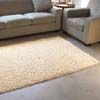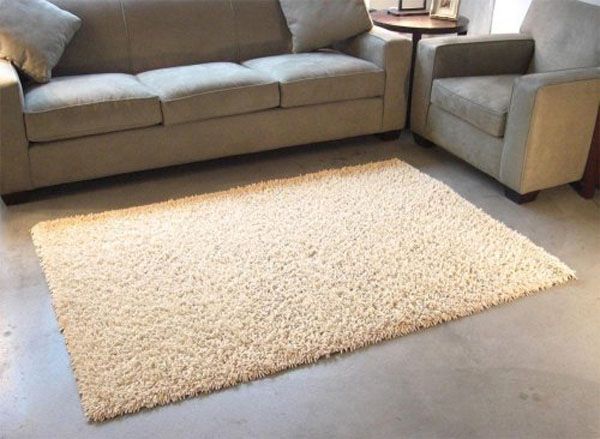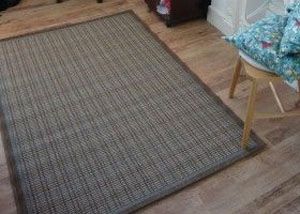
.
Natural and ecological rugs
 Thanks to the fact that it seems that society, in general, has begun to awaken its awareness regarding the need for sustainability in its broadest concept, and to the necessary care of the environment, today there is a large number of organic products on the market, especially for home.
Thanks to the fact that it seems that society, in general, has begun to awaken its awareness regarding the need for sustainability in its broadest concept, and to the necessary care of the environment, today there is a large number of organic products on the market, especially for home.
The “new” consumer is looking for natural options to synthetic and artificial products. One of the easiest items to replace are the rugs of synthetic fibers, by others natural.
There are some ecological rugs made with different fibers to choose from, such as:
- Coconut fiber, this yarn can be used for domestic or public spaces, it offers variety in weft and colors. The great advantage of this type is that they are biodegradableit is hypoallergenic, it is not damaged by insects and it regulates the humidity of the environment.Coconut yarn is usually mixed with other natural fibers to achieve better products, but retain their best features.
- The jute it’s a natural material Y biodegradable, widely used to make ecological rugs. Jute can be used to make rugs alone or combined with other fabrics such as cotton, sisal, coconut fiber, paper yarn and others. Jute in rugs gives it a very soft texture and a warm appearance. They are effective for light and medium traffic flows.

- We have left for the end, the most innovative. The rugs Less known but very ecological are the Finnish of paper, calls wood notes. Which are made of 86% paper and 14% cotton.
These have the advantage – in relation to the sustainability and respect for environment– that recycled paper can be used for its preparation. In addition, these rugs are very soft and fresh, very suitable for times of high temperatures, and allow very beautiful designs to be achieved in various styles.
The interwoven paper, made with paper cord, is much less delicate than its name suggests. It is not a simple interlocking paper like you might use to wrap a package or hang as a wall decoration, but rather consists of a fabric specially designed to be walked on. Its resistance to rubbing is lower than that of traditional wool or cotton rugs, but its durability is still good.
Advantages of interwoven paper mats
The paper cord is created from paper ribbons that are rolled up to form ropes, which acquire great solidity, strength and durability. An important advantage of this type of fabric -in addition to its sustainable nature- lies in the fact that the ropes and joints are very compact and, as a consequence, they accumulate very little dust. For this reason, these rugs are considered very hygienic and antibacterial.
 They often have a rubber base, which has two functions. On the one hand, it makes the rug softer and therefore more comfortable. On the other, it works as an anti-slip, which is necessary for those made with lighter materials. In the event that it does not have a rubber base (or similar element) that covers its entire surface, it is advisable that it at least have non-slip systems at its ends, to avoid falls or other domestic accidents.
They often have a rubber base, which has two functions. On the one hand, it makes the rug softer and therefore more comfortable. On the other, it works as an anti-slip, which is necessary for those made with lighter materials. In the event that it does not have a rubber base (or similar element) that covers its entire surface, it is advisable that it at least have non-slip systems at its ends, to avoid falls or other domestic accidents.
Being a fine and delicate material, it is usually recommended above all for places where you can show off its beautiful appearance, but that are not high traffic, such as a corner of the living room more or less far away or right between the sofa and the television, where there is the possibility of barefoot. Thus, the woven paper or paper cord mat will wear less.
Caring for paper cord rugs
The delicacy of interwoven paper is evident in the care and precautions that must be taken during cleaning. In general, for its maintenance, it is enough to vacuum it and air it frequently (on a daily basis, if it is subjected to a lot of traffic).
In case something solid is spilled on it, the paper mat should not be hit or shaken. In any case, it should be rolled up, placed in a vertical position and lightly tapped on the ground.
If what is poured on top is a liquid substance, it is advisable to dry it as soon as possible with kitchen paper and then apply (without rubbing) a damp cloth or sponge. If necessary, you can also use a little neutral soap. Then it is allowed to dry well, a process that can be accelerated with a hot air dryer, always being careful not to damage the fabric.
Other ecological options are the abaca fibers, bamboo, algae Y reeds mixed with cotton, wool and other natural yarn.
You have to look at the labels of the rugs to be able to know the fibers that compose them.
It does not matter if they are made by hand or with machines, what is really important is that the materials are biodegradable and made with fibers of natural origin no chemicals
It is possible to buy high quality rugs, which are decorative and ecological, since there is a wide range to choose from.
Source: green renewables Y EroskiConsumer



